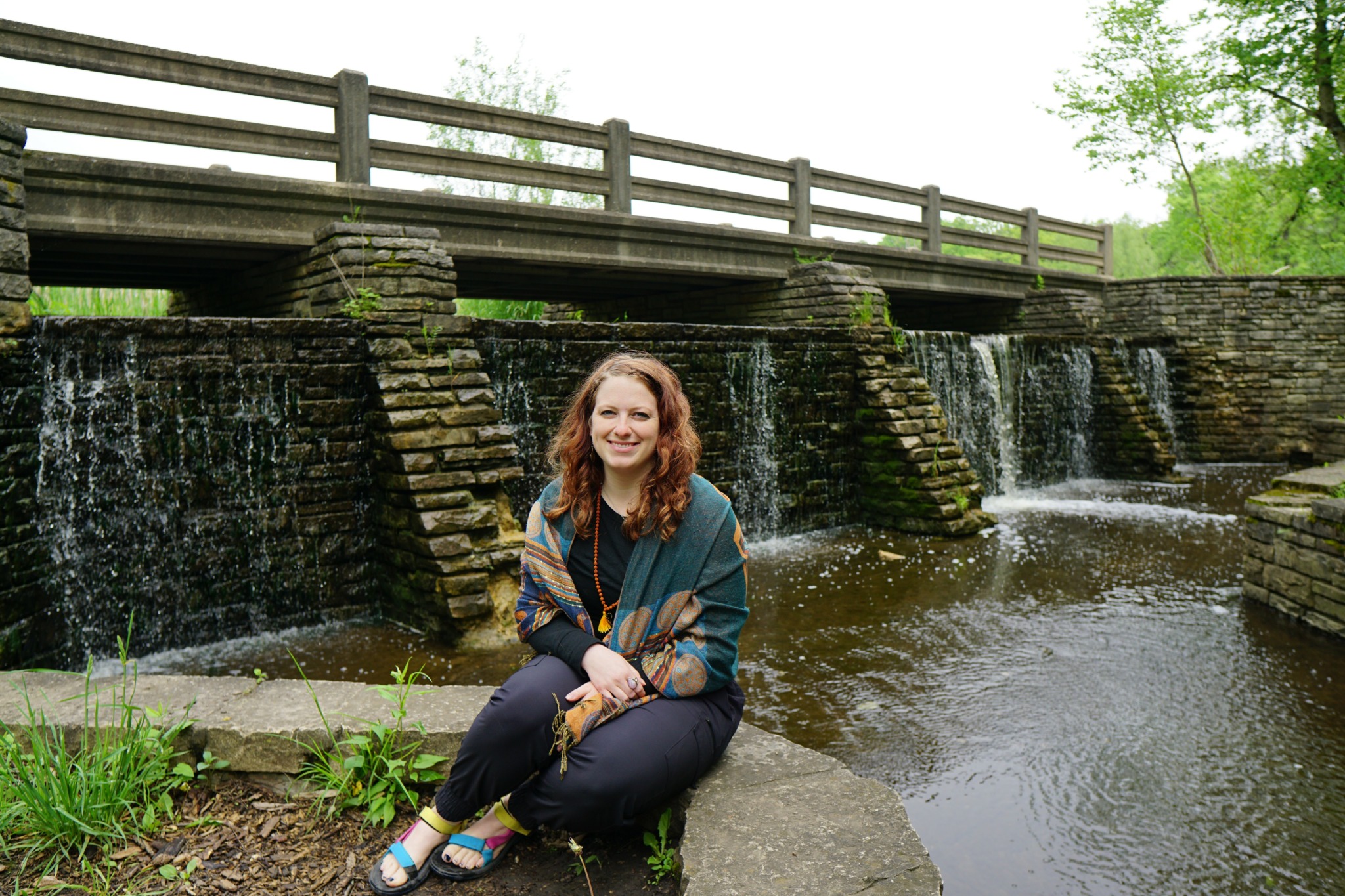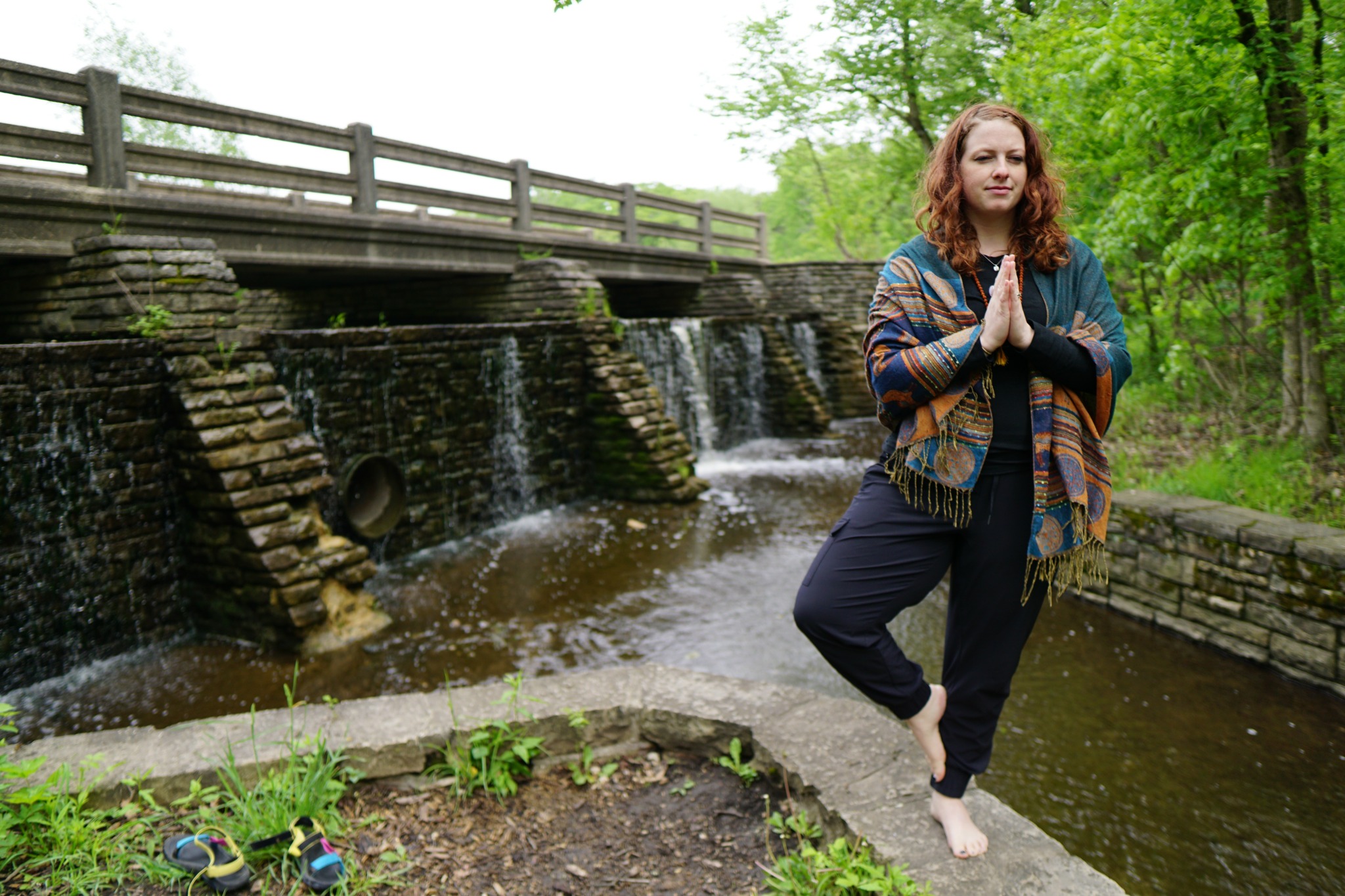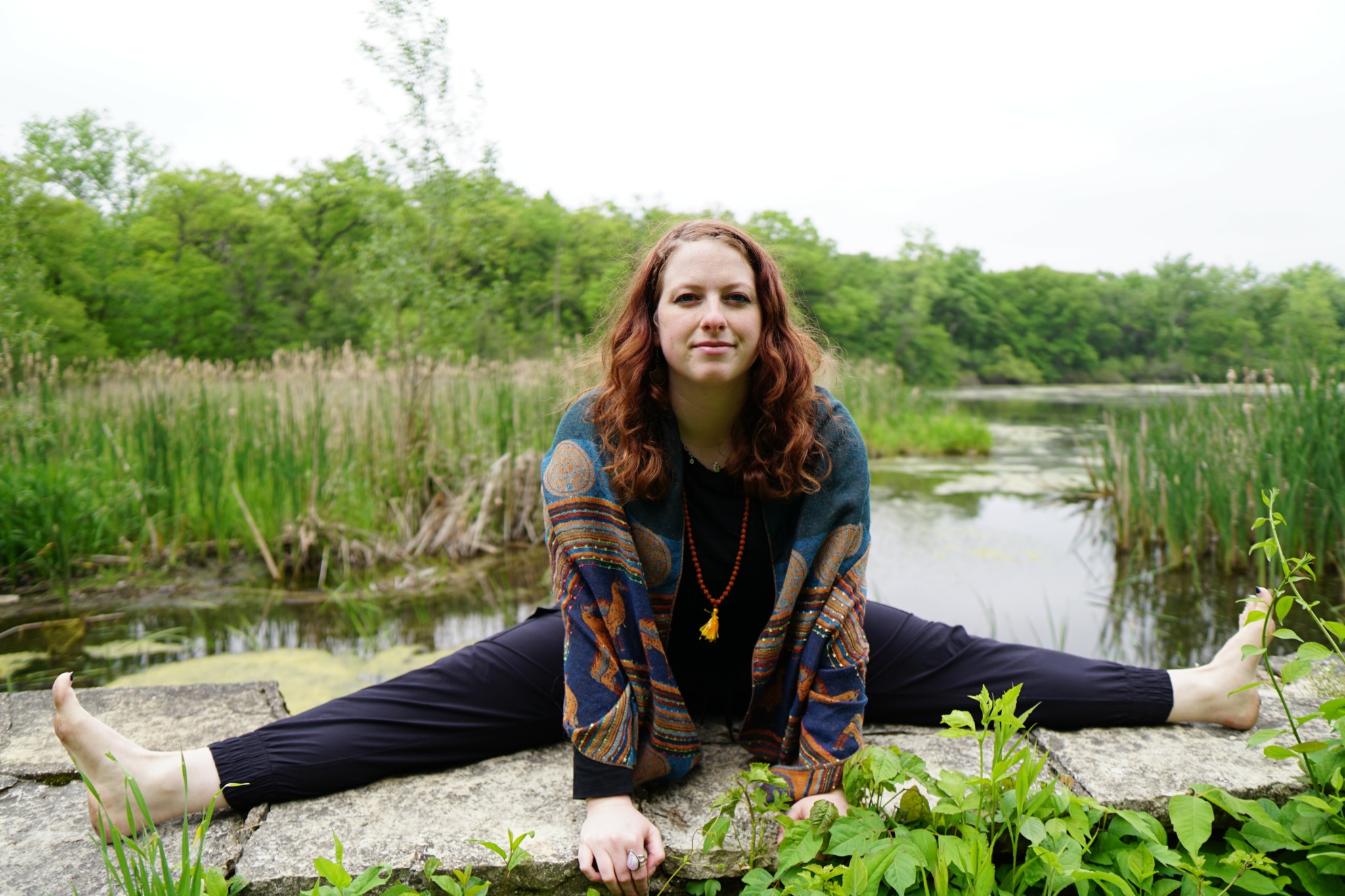We caught up with the brilliant and insightful Nikki Rice a few weeks ago and have shared our conversation below.
Alright, Nikki thanks for taking the time to share your stories and insights with us today. Can you talk to us about a risk you’ve taken – walk us through the story?
The biggest risk I’ve ever taken was deciding to leave my career with no plan. Though I would absolutely not suggest this, three years ago I was at a point in my life where I was not living authentic to my values and my health both mentally and physically was suffering for it. Though there were many skeptics who challenged my decision, making the shift to become a yoga teacher and start my business, Cedar & Sage was the best decision I have ever made.
Prior to starting Cedar & Sage, I worked as a Cultural Resources Specialist at a large and successful National Laboratory. I was the youngest hire by about ten years and I was still the youngest when I decided to exit the position six years later. In this position, I collaborated alongside different federal agencies, universities, and Tribal communities all over the United States and overseas on projects that provided support for environmental and cultural protection. Think Archaeologist who sometimes did fieldwork and archival work, but then also worked with leaders from federal agencies like Air Force and Department of Energy to teach them how to communicate and work together with Tribal Governments to protect archaeological sites and things of cultural and environmental value.
I heard over and over again from my colleagues that I would never want to leave the laboratory I was at; and really this was true for most people who worked there. I saw many who stayed until retirement and even came out of retirement to resume work. I was told what an amazing opportunity it was to work at the facility I was at and at such a young age. I do believe this is true because I had life changing experiences I never would have received anywhere else. But right when I was on the brink of signing a new contract for a big promotion, I decided to leave anyway because I knew in my gut it was the right thing to do.
Teaching yoga was something I knew I was always meant to do. I liked going to classes when I was a teenager and the practice really shaped my life when I got to college and had been struggling with health issues. I remember teaching my friends for fun and truly believing if the college thing didn’t work out then teaching was something I could always fall back on. When I look back sometimes I wonder if I should have started teaching ten years ago when the idea first began. But then I catch myself because I know I would not be the teacher I am today without the experiences I had over the last ten years. It’s cliche to say but it is true.
I spent over ten years working alongside Indigenous cultures trying to educate others on how to create social equity within the United States and abroad both at the National Laboratory and in college. In all that time, I felt like I barely made a dent in creating positive change. But in the first year I started teaching yoga I could see the influence yogic teachings was having on my students. This may sound strange because most people who understand yoga in the west see the practice as purely physical, but it can be hardly physical at all. Let me explain.
Yoga means union or unite. There is a physical part to the practice yes, but there is pranayama (breathwork), marma points (acupressure points), mantra work (chanting), mudras (hand positions), the yamas and niyamas (ethical principles on how to live a well rounded life). I could go on and on about how many things are involved in yoga that have nothing to do with the “aesthetically pleasing” physical postures. But all of these things done during yoga classes are meant to reduce rajas (activity) and tamas (heaviness) from the mind and body so that when we get to savasana there is no attachment to the body or mind and we can finally witness where the soul is. Where peace is. So yoga means “union” or “unite” with the soul but it’s more than that too. The vedas (ancient philosophy) says we all come from this same place where the soul resides. So after a yoga practice we are not just uniting with our own soul but we are united together from the same source.
And when I can get students to understand that. That we are all branches from the same tree. Harm to one branch is harm to the entire system. Then I can see their lives transform and watch them go out into the world to do positive work and create a better society for not just themselves but EVERYONE. Yoga does not just inspire movement. It inspires liberation – freedom for all. It only makes social justice work even stronger because it is practiced from a grounded, peaceful, place where people’s nervous systems are finally regulated.
So if I did not spend all that time over the years trying to create social justice then I would not have been able to understand the true meaning of yoga. I would not be in the career that I am in inspiring others to create a better life for themselves and the world for others. Before I was fighting for social justice in a toxic environment with no footing. Now I am able to fight for social justice while cultivating my own sense of peace. I took a risk leaving my career to create a business but now I get to create an inclusive yoga practice and inspire liberation for all.
As always, we appreciate you sharing your insights and we’ve got a few more questions for you, but before we get to all of that can you take a minute to introduce yourself and give our readers some of your back background and context?
My first yoga class was at a very young age at my local gym. I was a competitive gymnast growing up so getting into the postures and running through the sequences came fairly natural to me. However, my practice was inconsistent until I became a Sophomore in College. At the time I had been struggling with many medical mysteries including chronic pain, migraines, and extreme vertigo that made walking and functioning difficult. Doctors were unable to get to the root cause of my symptoms and yoga seemed to be the only place that helped the symptoms I was experiencing. After almost a year, I began treating my symptoms with Ayurveda: a holistic medical system originating from India and a sister Science of yoga. Two weeks into treatment all my symptoms vanished. It was then that my spark to become a yoga teacher started. I wanted to provide comfort for those struggling with chronic pain and medical mysteries like I was.
The following years my yoga practice became very sporadic. I spent the rest of my time in college working with Indigenous Tribes and Universities participating in various internships, independent studies, and as a teaching assistant to develop language curriculum that aided in Indigenous Language vitality and revitalization along with educating and spreading cultural awareness about Indigenous rights. I later received a degree in Anthropology, American Indian Studies, and Cultures and Communities. Following graduation, I was immediately hired as a Cultural Resources and Tribal Consultation Specialist at a National Laboratory. As I mentioned earlier, that is where I worked on many social justice projects that supported environmental and cultural protection.
About six years later I came back to yoga because I was struggling with my health again and severe burnout. It was then, the spark for becoming a yoga teacher returned. Originally thinking it would be a side gig to fulfill me and help others, I became infatuated with yoga’s traditional teachings and knew teaching yoga had to be my full time job.
The training I received was in the Krisnamacharya Lineage, one of the most influential teachers who was famous for developing Vinyasa yoga and worked and trained his brother-in-law B.K.S. Ilengar who created the prop system and Ilengar yoga. One of the main contributions Krisnamacharya provided was adapting the practice to each individual’s needs. Making a yoga practice inclusive for everyone of all backgrounds is one of the main ethics I follow throughout my teachings.
The name Cedar & Sage means many things and is my way of remembering and giving thanks for all that I have learned throughout my journey along with paying tribute to my ancestral roots. Cedar and sage are two sacred plants to Anishinaabe Tribes surrounding the great lakes but also many cultures around the world, including regions, but not limited to South Asia, North America, and various locations in Europe. In all aspects of cultural beliefs, when used together they provide profound healing. They are two plants that many cultures have come to agree on to be sacred and encompass vital healing properties. That’s what I wanted Cedar & Sage to be about: a sanctuary where we can all come together to find sacredness, freedom, and healing, no matter your background.
All of Cedar & Sage teachings are rooted in yoga’s traditional teachings and aim to be inclusive for everyone by providing modifications, thoughtful language, and teachings from the heart. Services offered include in-person one-on-one training for those needing extra support, yoga with friends for those who want extra support and friends in their corner along their yoga journey, and yoga for corporate events and retreats all over the northwest suburbs. Self care should be accessible to all people, regardless of body, size, age, mental capabilities, gender, ethnicity, religion, or economic standing. Cedar & Sage aims to provide a practice for all people.
One of the latest projects Cedar & Sage just released that I am most proud of is the Unite Yoga Project. This project is what sets Cedar & Sage apart from other yoga studios and is where self care and liberation can be practiced and shared with everyone. The Unite Project is an online yoga class library that includes recorded yoga classes that encompass yoga and self care teachings that follow and respect the ancient knowledge provided to us. All classes aim to follow Cedar & Sage’s mission of inclusivity but much much more than that. Even though yoga and various self care practices come from black and brown communities, these types of teachers are rarely represented. I wanted to change this. Memberships will be given to different marginalized communities each year and Cedar & Sage aims to hire teachers from all types of backgrounds so that all walks of life are represented. Not just just one social class. This project has just launched and is in-progress.
For the first year classes are pay-what-you-want, with the understanding that the more classes are taken the more funds will grow to hire teachers and create a larger, vibrant, class library. The Unite project provides everyone an opportunity to practice self care while at the same time make a positive difference and stand together to uplift all backgrounds. Yoga or yog is defined as union or unity. That is what the Unite Project is all about. It’s a place where everyone may come together to create an inclusive yoga practice for all. Where everyone may unite together to find liberation, freedom, for all.
How about pivoting – can you share the story of a time you’ve had to pivot?
When I first started my yoga business, I had to pivot and change course many times to find out what works for my clients and audience. This is true for me but, I think it is also true for a lot of business owners. You have to find what works and you can’t figure out what works until you actually make a decision, try something out, and see how your clients respond.
I started teaching my clients in a little personal training studio in a tiny strip mall, and I even still teach some students there today with certain needs. I share the space with a personal trainer, and at the time I had this big idea that I would teach big group classes there. To make this work I had to completely transform the space for my students prior to every session. This involved moving 50 pound weights, trampolines, and big machines to make enough space for everyone. Looking back, I laugh because it seems ridiculous to me, that as a yoga teacher trying to promote taking care of your body and health I was moving large equipment to create the right aesthetic for my students. After a few months into doing this, I finally gave in and decided the space was never meant for group classes. It felt cramped in there for lots of people and attendance was low. I decided to pivot to only offer small one-on-one or yoga with friend sessions in the space and this decision ended up working out better.
From a business standpoint it just made sense. I was able to charge a higher rate than group classes because classes were more personalized. Offering the Yoga with friends sessions allowed me to create a lower rate than other One-on-One yoga sessions while also making a fun space for students who wanted to do yoga with people they know. I also didn’t have to set up a crazy amount of equipment so I received more time back for myself.
But the thing that really mattered to me was creating authentic connections with my students and a space that felt as inclusive as possible. Many people go to a yoga class and the trending classes are intimidating. The music’s blaring and lights are blasting everywhere, people are doing splits and handstands, all in tight clothing. It’s intimidating and in my opinion, and I know others who teach traditional yoga can agree, it’s not really yoga at all. I hear from my students all the time that having an affordable one-on-one option gives them a doorway into yoga and courage to finally start their own practice.
Smaller classes are beneficial for beginners but also for those who had to change their practice over the years completely due to mobility restraints. This is a lot of my students. When I’m teaching one-on-one sessions I often need to completely pivot what I had planned because someone’s struggling with their back or knees that day and need a more supportive practice. It makes it interesting and bends your mind as a teacher. It’s also truly fulfilling because I get to see students realize that the practice is truly for everyone if approached in the right way.
Though I still teach group classes, most of my classes I teach are one-on-one and I very much treasure my one-on-one sessions with my students. I never would have had these experiences if not for making the decision to adapt to the space I was working in.
What do you think helped you build your reputation within your market?
Staying true to myself and teaching yoga traditionally, despite the popular trends in the western yoga industry. I teach yoga with less emphasis on the physical postures and include more discussion on the philosophy of the practice.
I said that if I were ever to teach yoga that I would go about it in the right way with no cultural appropriation. Enough of that. Yoga was a gift given to all of us. When Swami Vivikenanda first brought yoga to the west he attended the First World Fair and spoke at the Parliament of Religions. In the speech he recognized all religions and said yoga’s philosophies and scientific teachings are meant to be practiced by all and can potentially foster unity among all people. I think if he were to speak today he would say TRADITIONAL Yogic philosophies are meant to be practiced and shared with all. Not this watered down, white, “aesthetically pleasing” person in an expensive Yoga outfit doing headstands and excluding half the class because they do not look or “perform” the same. No, that’s an insult to an ancient practice. That is not yoga.
This practice is meant to be shared with everyone (who respects it). What sets me apart as a teacher is that I actually believe and practice this. I aim to be inclusive and honor people of all body types, mental and emotional capacities, religions, genders, ages, ethnicities, and economic standing.
Classes are modified to the individuals needs with many physical modifications; I don’t teach in fancy outfits or blast the most trending songs; I always try to use inclusive language that respects all genders, religions, all individuals; tiered pricing is available to those from all economic standings. I try to create a space for everyone so that at the end of the day all of that peels away and students can finally let go and meet their true soul. Their true selves.
I think the Unite Project I created sets me apart the most. It is a project I believe in with my soul. My aim is to create an inclusive traditional yoga class library accessible for all, that uplifts marginalized communities by including teachers from these types of backgrounds. It’s a project we can all work and unite together on. Which is what yoga is all about.
Contact Info:
- Website: https://www.cedarsagesanctuary.com
- Instagram: https://www.instagram.com/cedarand_sage/
- Facebook: https://www.facebook.com/profile.php?id=61563408054374
- Other: https://www.tiktok.com/@cedarand_sage Tik Tok




Image Credits
My images.


